Service Alert
Delay in delivery of Direct to Player materials
You may experience a delay in the delivery of Direct to Player books and magazines. All requests for materials will be delivered as soon as possible. Thank you for your patience.
You may experience a delay in the delivery of Direct to Player books and magazines. All requests for materials will be delivered as soon as possible. Thank you for your patience.
Showing 1497801 - 1497820 of 1498653 items
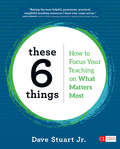
By Dave Stuart. 2019
Streamline literacy instruction while increasing student achievement Dave R. Stuart Jr.’s work is centered on a simple belief: all students and…
teachers can flourish. Yet that seemingly simple goal can feel unattainable when teachers are expected to teach core content within the disciplines and improve literacy in their classrooms. How can teachers and students flourish under so much pressure? Stuart’s advice: Take a deep breath and refocus on six known best practices— establish and strengthen key beliefs, then build knowledge and increase reading, writing, speaking and listening, and argumentation in every content area, every day. These 6 Things is all about streamlining your practice so that you’re teaching smarter, not harder, and kids are learning, doing, and flourishing in ELA and content-area classrooms. In this essential new resource, teachers will receive Proven, classroom-tested advice delivered in an approachable, teacher-to-teacher style that builds confidence Practical strategies for streamlining instruction in order to focus on key beliefs and literacy-building activities Solutions and suggestions for the most common teacher and student "hang-ups" Numerous recommendations for deeper reading on key topics In addition to teaching English and world history for more than a decade, Stuart is well-known for his blog DaveStuartJr.com, which has over 35,000 visitors each month. This popular resource has been a beacon of light for more than 10,000 subscribers who refuse to freak out about the everyday challenges of teaching in a high-stakes era. He presents professional development workshops and institutes for schools around the United States and offers a number of online learning tools and experiences on his website.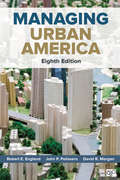
By John P. Pelissero, Robert E. England, David R. Morgan. 2017
Managing Urban America guides students through the challenges, politics, and practice of urban management—including managing conflict through politics, adapting to…
demographic and social changes, balancing budgets, and delivering a myriad of goods and services to citizens in an efficient, equitable, and responsive manner. The Eighth Edition has been thoroughly updated to include a discussion of the difficulties cities confront as they deal with the lingering economic challenges of the 2008 recession, the concept of e-government and how it affects the theory and practice of management, and the implications of environmental issues for urban government management.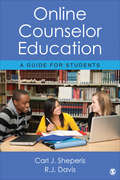
By Carl J. Sheperis, R. J. Davis. 2016
Online Counselor Education: A Guide for Students is an all-new guide for online students in counselor education programs. Students in…
online environments face a number of challenges that could put them at a disadvantage unless they have a resource to help guide them through some of the confusing aspects of an online environment. Such challenges include the lack of understanding surrounding graduate school performance expectations, balancing graduate school and life, the inability to connect with community members and local field agencies, and various other aspects unique to an online environment. This text will help students through these challenges and act as an invaluable resource.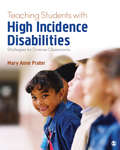
By Mary Anne Prater. 2018
To ensure that all students receive quality instruction, Teaching Students with High-Incidence Disabilities prepares preservice teachers to teach students with…
learning disabilities, emotional behavioral disorders, intellectual disabilities, attention deficit hyperactivity, and high functioning autism. Focusing on research-based instructional strategies, Mary Anne Prater gives explicit instructions and strategies for teaching students with special needs, and includes examples throughout in the form of scripted lesson plans. Real-world classrooms are brought into focus through teacher tips, embedded case studies, and technology spotlights to enhance student learning. The book also emphasizes diversity, with a section in each chapter devoted to exploring how instructional strategies can be modified to accommodate diverse exceptional students.
By Ellen B. Braaten. 2018
According to the CDC "about one in six, or about 15%, of children aged 3 through 17 years have one or…
more developmental disabilities," such as ADHD, autism spectrum disorders, cerebral palsy, intellectual disability, and learning disability. Intellectual disorders are characterized by significant limitations in both intellectual functioning and in adaptive behavior, which covers many everyday social and practical skills, impacting learning, reasoning, problem solving, and other cognitive processes. These disabilities originate before the age of 18 and continue across the life span. Developmental disorders are chronic disabilities that can be cognitive or physical or both. The disabilities appear before the age of 22 and are likely to progress across the lifespan. Some developmental disorders are largely physical issues, such as cerebral palsy or epilepsy. Some individuals may have a disorder that includes a physical and intellectual disability; for example, Down syndrome or fetal alcohol syndrome. Intellectual and developmental disorders are significant and growing issues that are studied across a number of disciplines. The SAGE Encyclopedia of Intellectual and Developmental Disorders is aimed at students interested in psychology, counseling, education, social work, psychiatry, health sciences, and more. This encyclopedia will provide an in-depth look at a wide range of disorders, alongside interventions, the latest research translated for an undergraduate audience, historical context, and assessment tools for higher-level students. We will take a truly interdisciplinary approach by also covering sociocultural viewpoints, policy implications, educational applications, ethical issues, and more.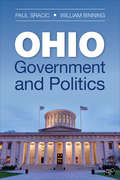
By Paul A. Sracic, William C. Binning. 2016
Ohio Government and Politics provides a thorough, highly readable overview of the history, processes, and institutions of the state’s government…
and politics. In a country increasingly divided into blue and red states, Ohio is "purple" – one of the few states that is not dominated by a single political party. Covering the crucial strategies of both the republicans and democrats as they vie for power in Ohio, this new title demonstrates the "nationalizing" of Ohio politics. However, contemporary issues specific to Ohio politics are not neglected; coverage of important issues such charter reform in Cuyahoga County and the controversies over the regulation of "fracking" is included.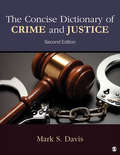
A new approach to making everyday criminal justice terms accessible A useful reference work for faculty and students, criminal…
justice professionals, writers, and anyone else interested in criminal justice and criminology, The Concise Dictionary of Crime and Justice, Second Edition, is an excellent, wide-ranging resource with clear definitions for over 3,000 key criminal justice terms. Often going beyond simply definitions, the dictionary places the entries in a meaningful context, connecting the definitions with other concepts. The dictionary uniquely presents common misperceptions for selected terms, along with additional relevant information to clarify a term’s use or derivation.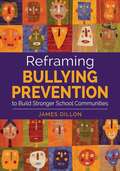
By James E. Dillon. 2015
Tackle underlying issues to get to the root of bullying By reframing bullying prevention, you can make significant progress in…
addressing the underlying issues causing bullying and aggression in your school. In this resource, James Dillon digs into the work that busy educators often have little time for: translating rich and insightful research on the dynamics of change into practical terms. He probes deeply into the issues and why they persist in our schools to promote meaningful conversation among school staff and parents. Inside you’ll find Vignettes, analogies, and real-life examples along with tools that illustrate the benefits of using alternative methods to prevent bullying Discussion on transforming the role of discipline to reframe bullying among teachers, administrators, and students Key ideas and concepts summarized in easy-to-understand bullet points and charts Guidance on how to establish a school climate that promotes empathy and compassion instead of fear Reframing bullying prevention will allow competent and caring educators, students, and parents to not just stop bullying, but to improve the learning environment for all students. "With bullying in our schools intensifying and becoming a dangerous detriment to both the learning process and to the self-esteem of our students, James Dillon provides sound strategies and realistic conversations that must become integral to the reduction and prevention of bullying in the schools." —Lori L. Grossman, Educational Consultant Houston, TX "While this book focuses on bullying prevention, the reframing process will change much more! Following the author’s ideas has the potential to dramatically and positively reframe a school culture to match the needs of the 21st century learners and educators." — Scott A. Miller, Teacher The American School of Kinshasa, Kinshasa, Democratic Republic of Congo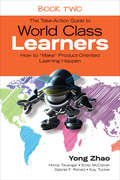
By Yong Zhao, Homa S. Tavangar, Emily E. McCarren, Gabriel F. Rshaid, Kay F. Tucker. 2016
Your blueprint for product-oriented learning The World Class Learners series provides the most complete information available on designing twenty-first century…
schools poised to leapfrog into the future! These practice-oriented books expand on Dr. Yong Zhao’s acclaimed World Class Learners, which presents a new framework for cultivating creative and entrepreneurial students. Now, with this second book in the follow-up three-volume set, Zhao digs much deeper, revealing how exactly to put that framework into effect. The second book in the series outlines how to Understand entrepreneurship and project-oriented learning Implement "making-as-learning" POL curriculum Help students create quality entrepreneurial products Understand ownership, copyrights, and patents Implement Zhao’s new paradigm shift one phase at a time, starting with any book, depending upon your priorities. Better yet, read all three volumes for a complete blueprint to entrepreneur-minded schooling. "The ideal school should provide opportunities and resources to enable students to personalize their educational experiences instead of receiving a uniform standardized, externally prescribed, education diet." -Yong Zhao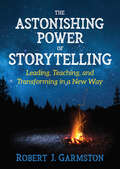
By Robert John Garmston. 2019
Master the secret to engaging any audience—from classrooms, to colleagues, to conference roomsEveryone loves a good story. More than entertainment,…
well-told stories captivate listeners and motivate action. In this guidebook, Robert J. Garmston shows you how to leverage the power of storytelling to engage and persuade students, colleagues, and all other audiences. Written in Garmston’s warm and conversational style and featuring current cognitive neuroscience research, the book includes: Detailed breakdowns of the essential elements all great stories share, and templates for creating yours Tips for supercharging your stories by drawing from personal experience as well as familiar movies, TV shows, and popular media A guide to effective story delivery, including optimized vocal inflection and body language Becoming a better storyteller will make you a more effective communicator and educator. Get started today with The Astonishing Power of Storytelling.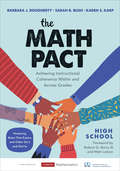
By Karen S. Karp, Sarah B. Bush, Barbara J. Dougherty. 2021
A schoolwide solution for students’ mathematics success! Do you sometimes start to teach a mathematics concept and feel like you’re…
staring at a sea of bewildered faces? What happens when you discover students previously learned a calculation trick or a mnemonic that has muddied their long-term understanding? When "rules" seem to change from year to year, teacher to teacher, or school to school, mathematics can seem like a disconnected mystery for students. Clear up the confusion with a Mathematics Whole-School Agreement! Expanded from the highly popular "Rules that Expire" series of NCTM articles, this essential guide leads educators through the collaborative step-by-step process of establishing a coherent and consistent learner-centered and equitable approach to mathematics instruction. Through this work, you will identify, streamline, and become passionate about using clear and consistent mathematical language, notations, representations, rules, and generalizations within and across classrooms and grades. Importantly, you’ll learn to avoid "rules that expire"—tricks that may seem to help students in one grade but hurt in the long run. Features of this book include: • Abundant grade-specific examples • Effective working plans for sustainability • Barrier-busting tips, to-dos, and try-it-outs • Practical templates and checklists • PLC prompts and discussion points When teachers unite across grades, students hit the ground running every year. Take the next step together as a team and help all your students build on existing understanding to find new success and most importantly, love learning and doing mathematics!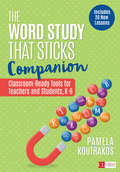
By Pamela A. Koutrakos. 2020
First Pamela Koutrakos delivered a systematic approach to inquiry-based, student-centered, and joyful word study in her book Word Study That Sticks.…
Now, in The Word Study That Sticks Companion, Koutrakos offers tools and resources to help teachers put those structures, lessons, and routines into action. Loaded with teacher-facing resources such as planning and assessment tools, and student-facing tools such as reproducible minicharts, choice checklists, and self-assessments, The Word Study That Sticks Companion includes Ready-to-go materials that greatly minimize the time teachers spend preparing, creating, and revamping word study lessons More than 100 student-friendly, reproducible minicharts for student notebooks that summarize the routines in each area of word study and support robust word learning Twenty brand-new word study lessons to extend the learning throughout the year and across content areas Ideas for word study notebooks and choice charts that give students ownership of daily practice Suggestions for replicating many routines and tools in a digital format Customizable cycle schedules, checklists, look-fors, planning guides, record-keeping forms, and other tools that help teachers crystalize priorities, organize instruction, and adapt for all learners The routines and resources here can be used within any curriculum, as they transcend any one program, philosophy, or approach to word study. The Word Study That Sticks Companion enables consistent, authentic, and independent word study practice in K–6 classrooms. With these materials in hand, students can take charge of their learning, and teachers gain more time for differentiated instruction. Discover what’s possible when you ditch word study worksheets and workbooks once and for all!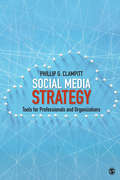
By Phillip G. Clampitt. 2018
"Finally, a social media text that combines liberal arts and social science intellectualism with practical, real-world tips for success in…
this crucial aspect of professional communications. Its value goes beyond the classroom – everything in the book will resonate with and be useful to PR pros already engaged in social media management." —Ray Begovich, Franklin College Social Media Strategy: Tools for Professionals and Organizations shows professionals and organizations how to use social media more effectively and strategically. With a focus on what makes social media unique among communication platforms, this book offers practical guidance on creating, implementing, and evaluating social media strategies and tactics. Social media is constantly evolving, so the book focuses on enduring strategic principles and uses case studies and exercises throughout to help readers build the fundamental competencies needed by today’s social media managers.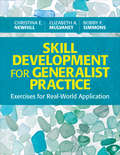
By Christina E. Newhill, Elizabeth A. Mulvaney, Bobby F. Simmons. 2020
Skill Development for Generalist Practice offers an array of competency-building exercises addressing foundational social work knowledge as well as skills…
and values across micro, mezzo, and macro levels of practice. Designed to be actively used during class time, exercises embrace the diverse range of clients encountered by social workers in various practice settings and reflect a commitment to serving those who are the most vulnerable, at risk, disadvantaged, and marginalized from society.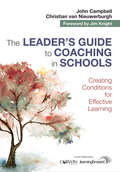
By John Campbell, Christian Van Nieuwerburgh. 2018
Grow your leadership skills to bring out the best in your school! Hallways, parking lots, staff rooms—these are all places…
where you and your staff have conversations every day. What if you could use these opportunities to build your staff’s resiliency and empower them to reach their goals. The Leader’s Guide to Coaching in Schools offers a proven, accessible, and usable framework to increase your interpersonal effectiveness and grow your ability to coach your staff to overcome obstacles and create their own solutions. Coaching experts John Campbell and Christian van Nieuwerburgh demonstrate how coaching is not just for formal coaching relationships, but how a coaching approach can be applied throughout a school day to create a culture of growth. Through sample questions, video examples, and tools this step-by-step guide shows you how to: Introduce a coaching approach into a wide range of conversational contexts Use the GROWTH coaching conversation framework to improve both staff and student success and well-being Use coaching approaches in areas that school leaders typically find challenging: in formal performance reviews, when giving informal feedback, and when working with teams Help your staff get "unstuck" no matter what challenges they are facing by using solutions-focused coaching techniques that help them envision desired outcomes and the actions needed to achieve them. "The GROWTH coaching model should be in every administrator’s hand as their bible for school improvement. Having this guide will guarantee success and getting the best out of all stakeholders." —Elizabeth Alvarez, Principal John C. Dore Elementary, Chicago, IL "The book is just what the doctor ordered for busy leaders—short and concise." —B.R. Jones, Superintendent of Education Tate County School District, Senatobio, MS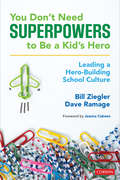
By Bill Ziegler, Dave Ramage. 2020
Create a culture and climate that produces real heroes The future of our schools depends on leaders who can foster every…
day heroism in others. This doesn’t require supernatural powers. It requires a willingness to be intentional in building heroes in our communities who are ready to get things done and take on the demands of the future. You Don’t Need Superpowers to Be a Kid’s Hero will help you create the climate that produces these heroes. Hero-building work will help you look deeply into your school culture and see yourself and your students and staff in a fresh, powerful way. Readers will find: · Training ideas for leadership teams · Instruments for gauging progress · Practical steps for building courage into practices · Practical strategies to help navigate the complexities of creating an extraordinary school · Hero-building stories from the field Written with an inspiring tone, this book will empower school leaders to lead in a way that unleashes staff and students to be superheroes in their communities.
By Jennifer Graeser Dornbush. 2020
A cold case murder, a grisly discovery, and a viper's nest of resentment, betrayal, and dirty secrets converge in this…
mystery perfect for fans of Kathy Reichs and Jayne Ann Krentz.It's been 12 years since Sandi Parkman went missing after being dropped off at home by her schoolmate, Nick Larson, now the Sheriff of Freeport, Michigan. When a construction crew unearths Sandi's bones--along with Nick's letterman jacket and one of his hairs--Nick becomes suspect number one in the murder. Dr. Emily Hartford, the daughter of Freeport's medical examiner, is called in to investigate, but the case is about to get personal. Nick was Emily's high school love, and now she has to either clear his name--or contend that he's the killer. As she delves into the case, a host of other suspects emerge: a coterie of Nick's jock friends from high school; Sandi's sister, Tiffany, now a dancer at a local strip club; and James VanDerMuellen, a trust funder who's recently returned to Freeport. As the autumn skies darken over Freeport and the holiday season looms, Emily must sift through more than Sandi's brittle bones to solve the case. Can she exonerate Nick--and rekindle their long-smoldering romance? The race is on to find the truth.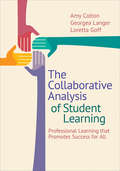
By Amy B. Colton, Georgea M. Langer, Loretta Goff. 2016
A proven approach to transformative professional learning that raises achievement for all students! Does professional learning at your school promote…
teacher growth and propel student achievement? If you’re ready for a change, turn to trusted educators Colton, Langer, and Goff, pioneers of an extraordinarily effective design for professional learning: Collaborative Analysis of Student Learning (CASL). You’ll find complete strategies, resources and more in this evidence-based book that addresses the Common Core State Standards. Learn how to: Benefit from the lessons learned by the authors over two decades of nationwide implementation as you design a sustainable CASL program that drives positive change at your school Inquire into student work and assessments to promote learning excellence for all Use the CASL Teacher as Collaborative Inquirer framework to promote culturally competent, academically rigorous teaching Develop and implement new instructional strategies that mesh with Common Core standards Discover how to put CASL in place at your school, helping faculty – and students – to reach their full potential. "This book is extraordinary and a must have for every practitioner striving to improve student learning! Colton, Langer, and Goff provide explicit guidance on building a culture of collaborative inquiry to empower teachers and leaders to explore their own practices in a way that fosters meaningful and relevant learning for students." Victoria Duff, Coordinator of Professional Learning New Jersey Principal and Supervisors Association "Teacher collaborative professional learning leads to improved teaching and student learning when it is skillfully orchestrated. In this book, Colton, Langer, and Goff provide an essential resource rich with strategies, tactics, tools, and examples to guide both facilitators and team members to structure collaborative inquiry, analysis, and learning in ways that deepen their learning and practice and increase results for all students." Joellen Killion, Senior Advisor Learning Forward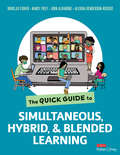
By Douglas Fisher, Nancy Frey, John T. Almarode, Aleigha Henderson-Rosser. 2021
What a year! Twelve months and counting since COVID expanded, stretched, and blurred the boundaries of teaching and learning, at…
least one thing has remained constant: our commitment as educators to move learning forward. It’s just the context that keeps changing—why Doug Fisher, Nancy Frey, John Almarode, and Aleigha Henderson-Rosser have created a follow-up to The Distance Learning Playbook, their all-new Quick Guide to Simultaneous, Hybrid, and Blended Learning. First, to be clear: simultaneous learning must not be an additive, meaning we combine two entirely different approaches and double our workload. That’s unsustainable! Instead, we must extract, integrate, and implement what works best from both distance learning and face-to-face learning environments. Then and only then—Doug, Nancy, John, and Aleigha insist—can we maximize the learning opportunities for all of our students. To that end, The Quick Guide to Simultaneous, Hybrid, and Blended Learning describes how to: Have clarity about the most important learning outcomes for our students. This will help us decide what is best done asynchronously and what is best done with our "Roomies" and "Zoomies." Capitalize on the potential of asynchronous learning and use that valuable time to preview and review. This way we can draw on evidence from these tasks to help us decide where to go next in our teaching and our students’ learning. Utilize synchronous learning for collaborative learning and scaffolding of content, skills, and essential understandings. In doing so, we can collect additional evidence of students’ learning so that we provide feedback that moves learning forward. Establish norms for combining synchronous and face-to-face environments in simultaneous learning. Importantly, we have to set up the environment for our Roomies and Zoomies to learn together. Develop learning experiences and tasks that maximize learner engagement for all learners in all settings. Focus on acceleration and learning recovery. In other words, no more deficit thinking! Our students are where they are and there are specific things that we can do to ensure their learning. Implement the guide’s many resources, strategies, and templates. "None of us chose to be in a situation where some learners are physically in our classrooms, while others attend virtually and remotely," write Doug, Nancy, John, and Aleigha. "However, what we hope to convey is that we’ve got this! While the context is different, the principles behind clarity, planning, high-yield strategies and interventions, student learning, and assessment hold steady." This is where The Quick Guide to Simultaneous, Hybrid, and Blended Learning will prove indispensable on this next leg of our journey.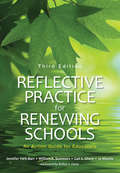
By William A. Sommers, Joanne K. Montie, Jennifer York-Barr, Gail S. Ghere. 2016
Renew your teaching and your passion with this updated bestseller! The teaching life can be hectic, complex, and even lonely.…
That’s why so many educators turn to reflective practice to reenergize their commitment to students—and to themselves. Reflective practice counteracts the effects of professional isolation and instills a personal and communal sense of meaning, renewal, and empowerment. This best-selling book offers research-based and practical ideas and strategies for using reflective practice individually, with colleagues, schoolwide, and even district-wide. Features of the newest edition include: Updated strategies for engaging adults and students and using reflective practices to create equitable outcomes New examples of reflective practice in action A new chapter on the core leadership practices for growing reflective practice A new companion website with resources and reflection protocols When you make reflective practice part of your journey as an educator, your insights benefit everyone—and ensure enhanced learning and development for students. "This book is one of the best in the field. It lends itself to practical solutions if the reader remembers that the gifts of time and relationships are at the center of this work. The book takes a lot of theory and melts it down to hands-on pieces doable in a school or district setting." —Michele R. Dean, Coordinator, Ventura County Indian Education Consortium Ventura Unified School District, CA "The book has broken down reflection into its component parts, cycles, characteristics, and capacities. I applaud the insights and experiences of the authors." —Pat Roy, Senior Consultant Learning Forward